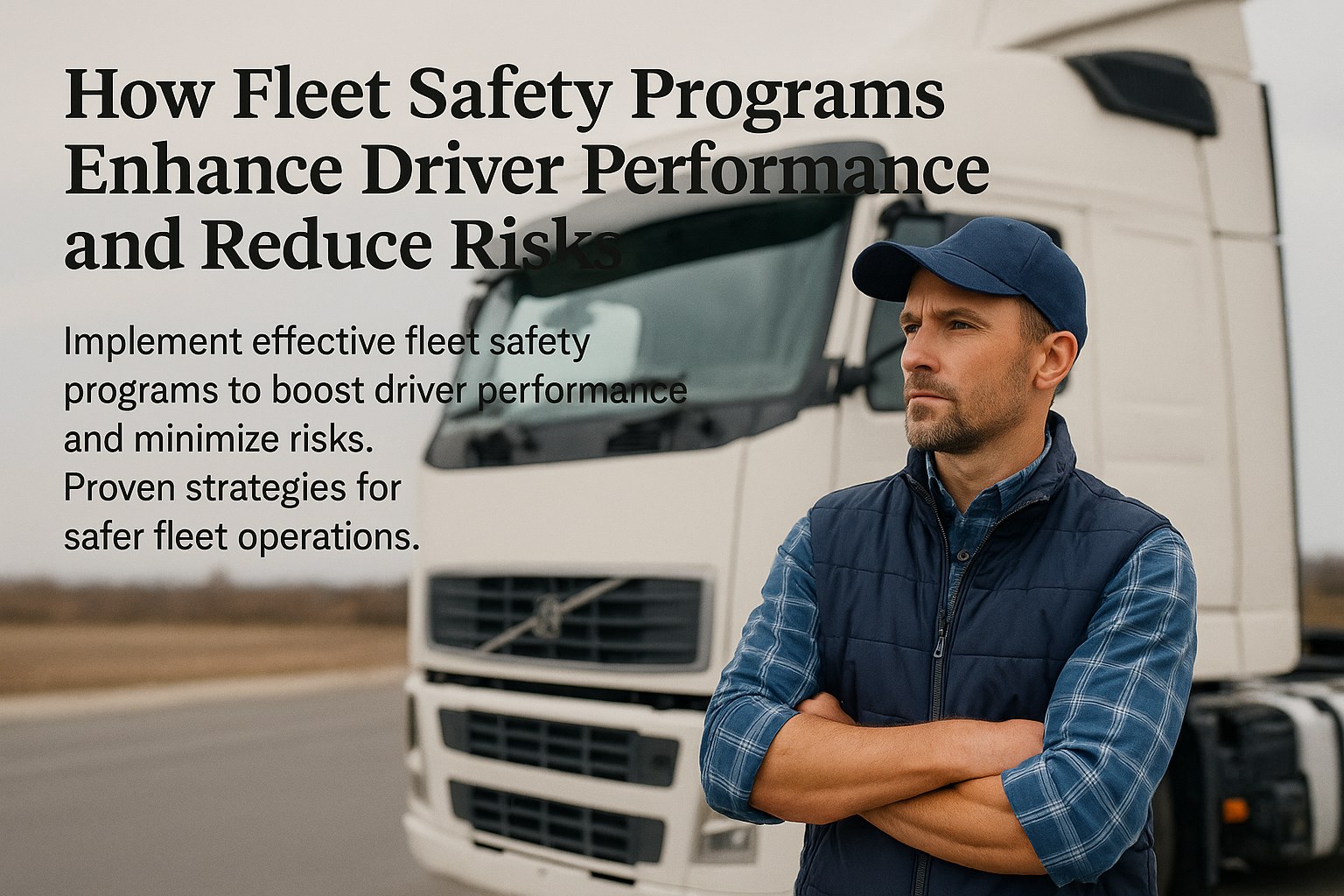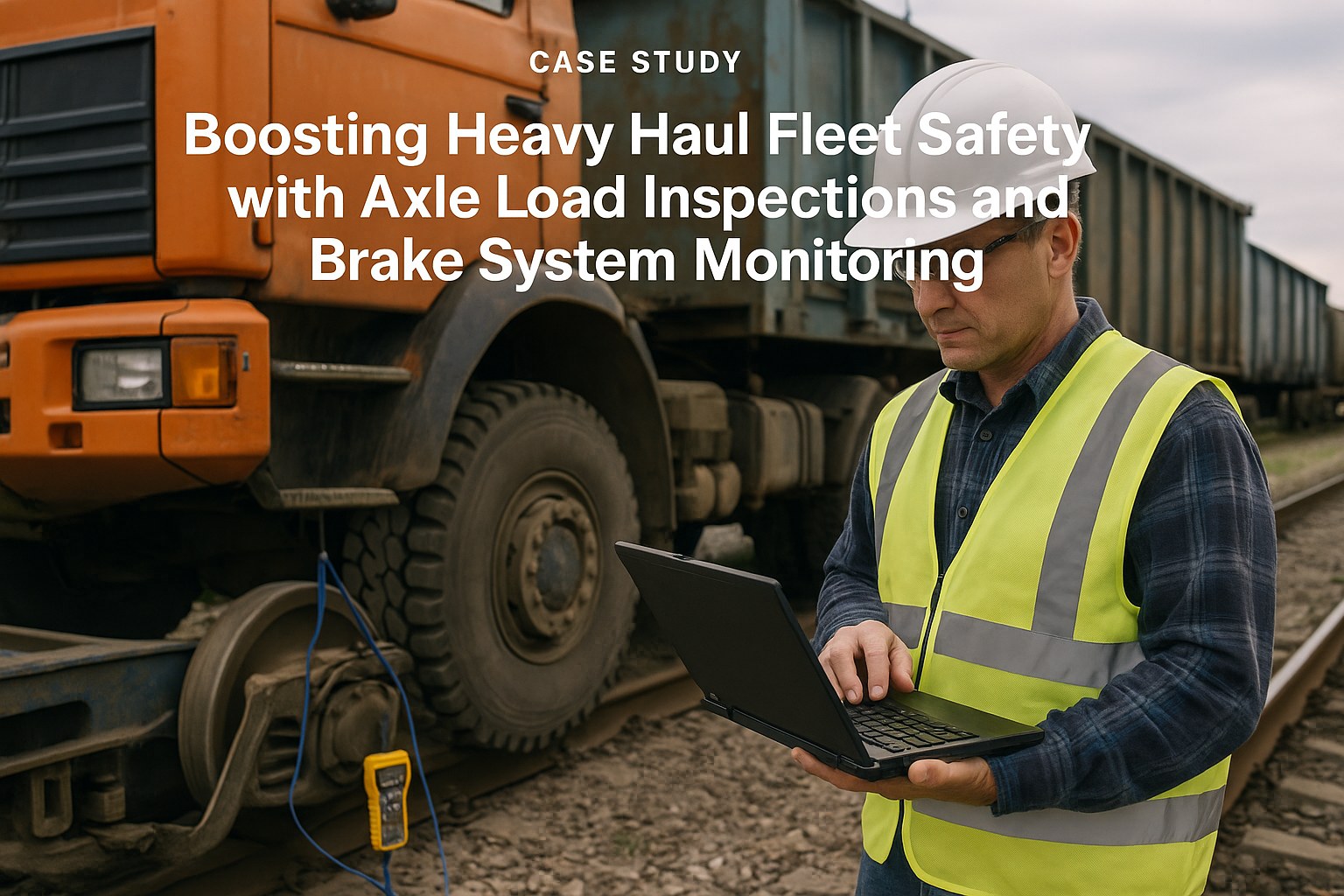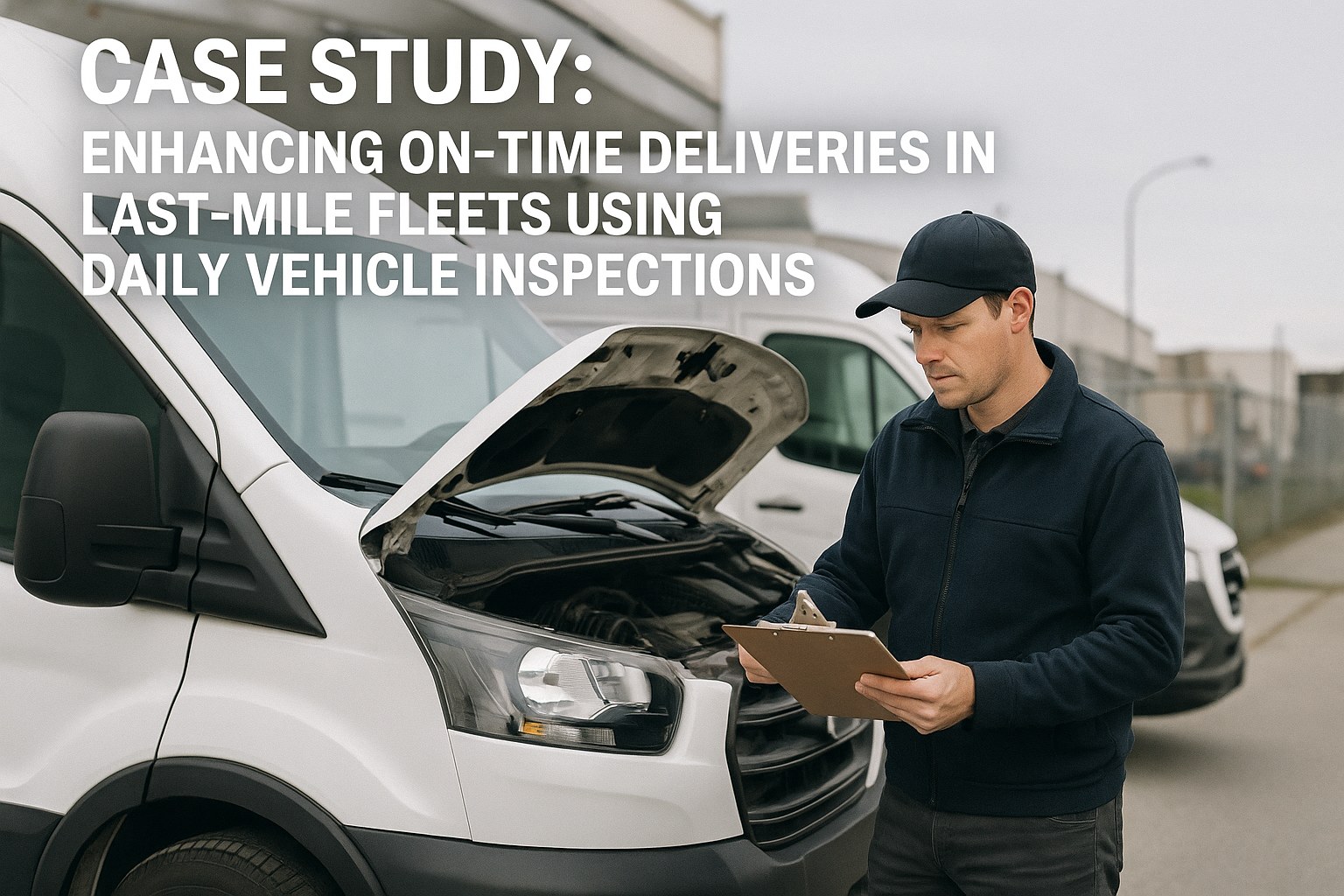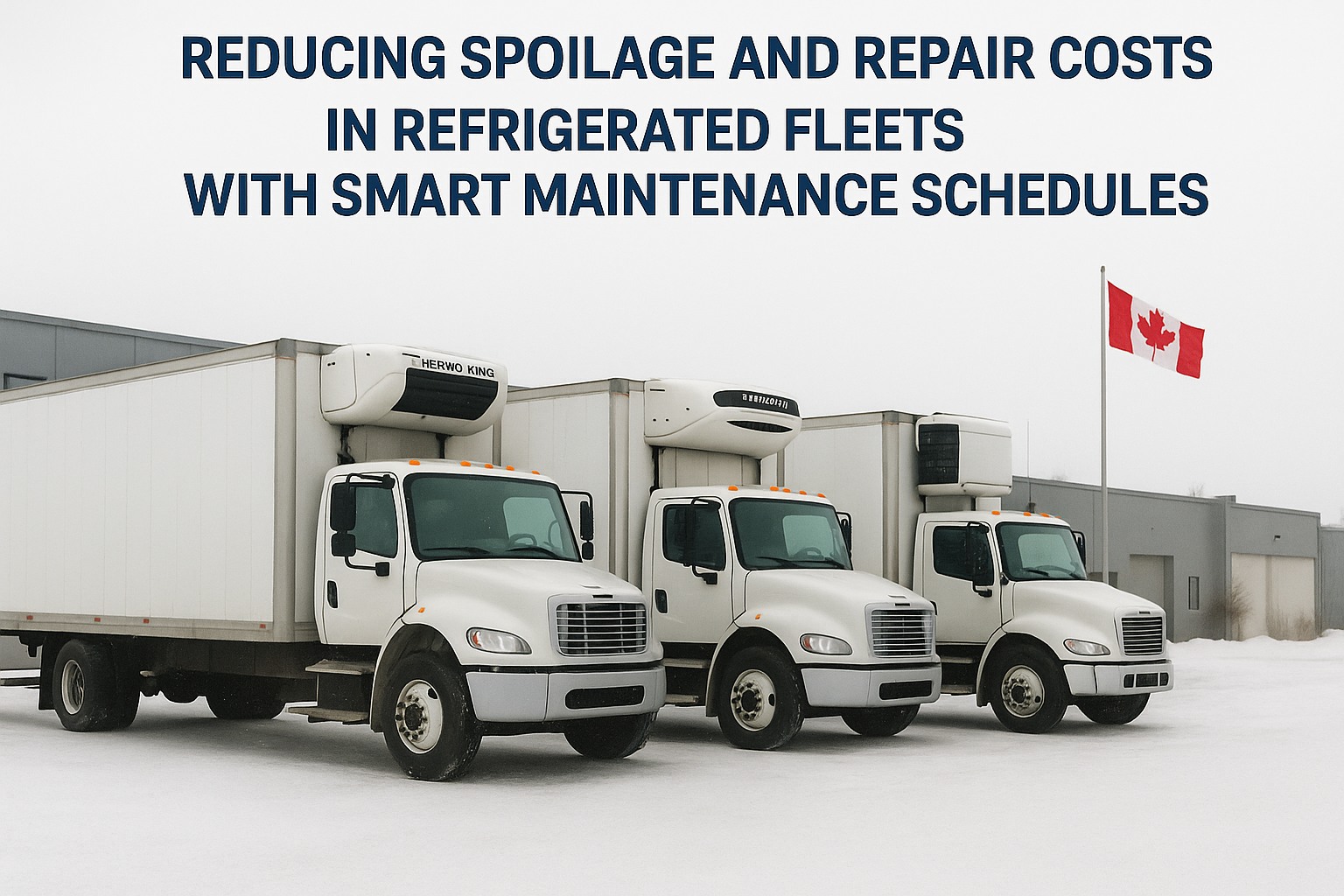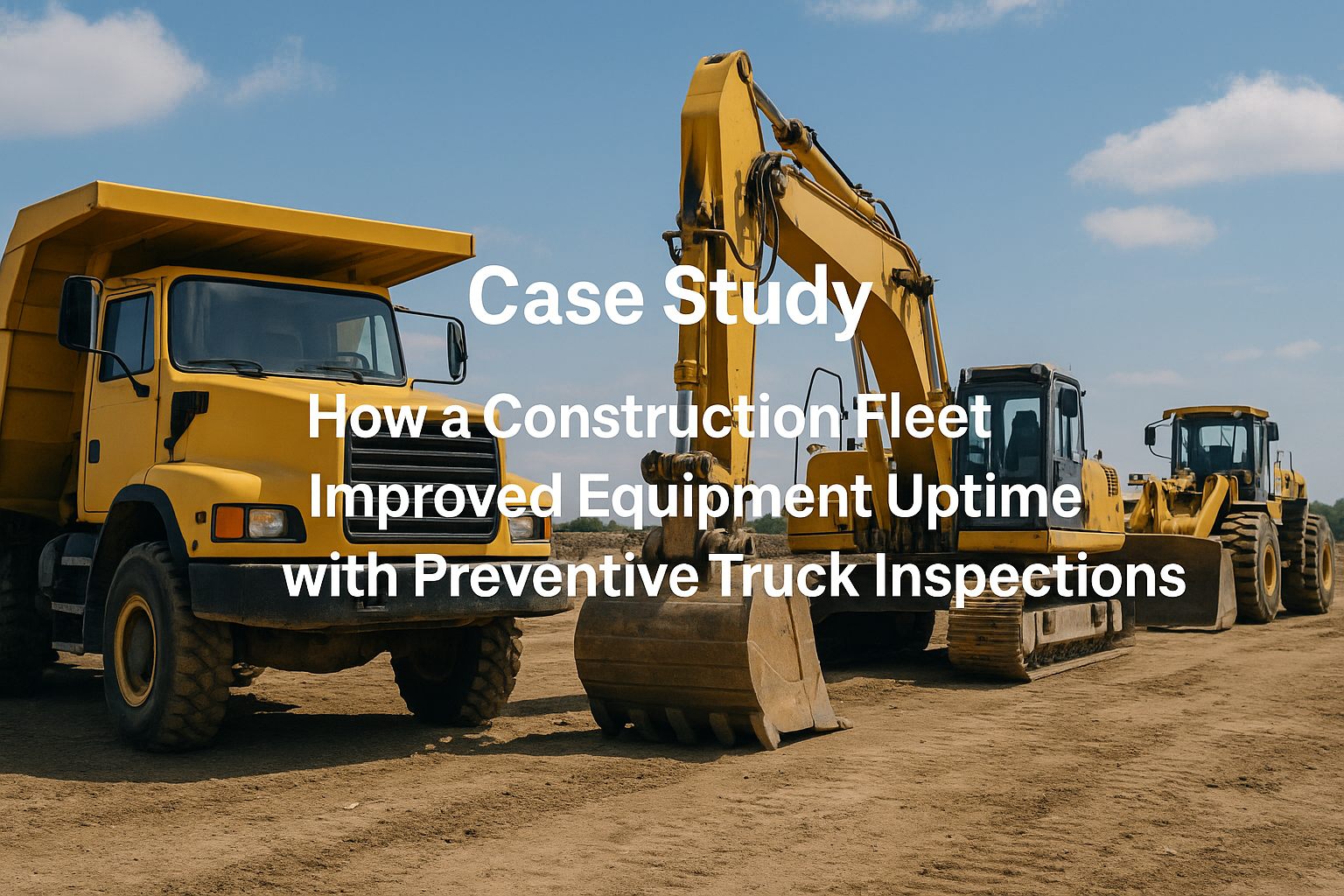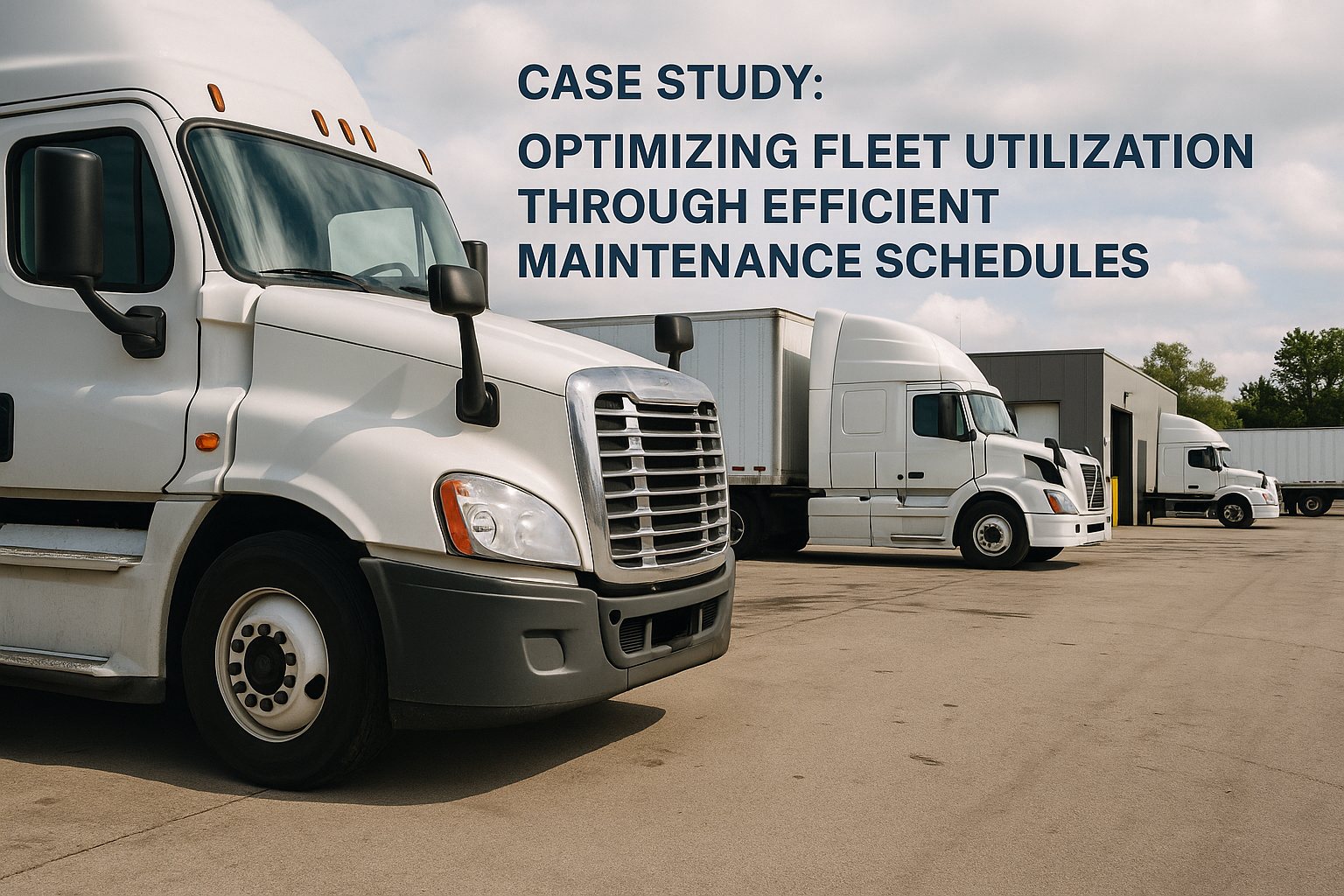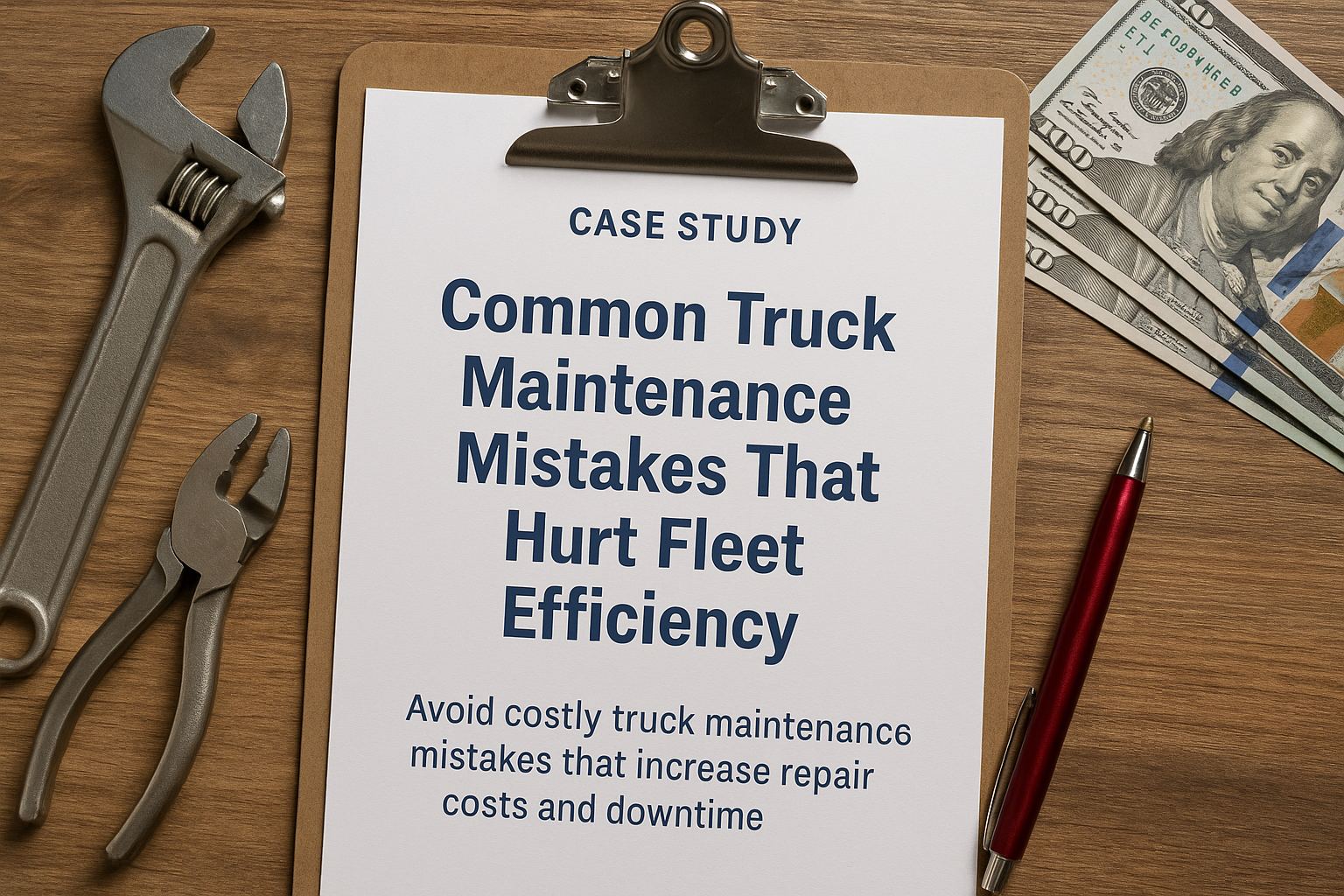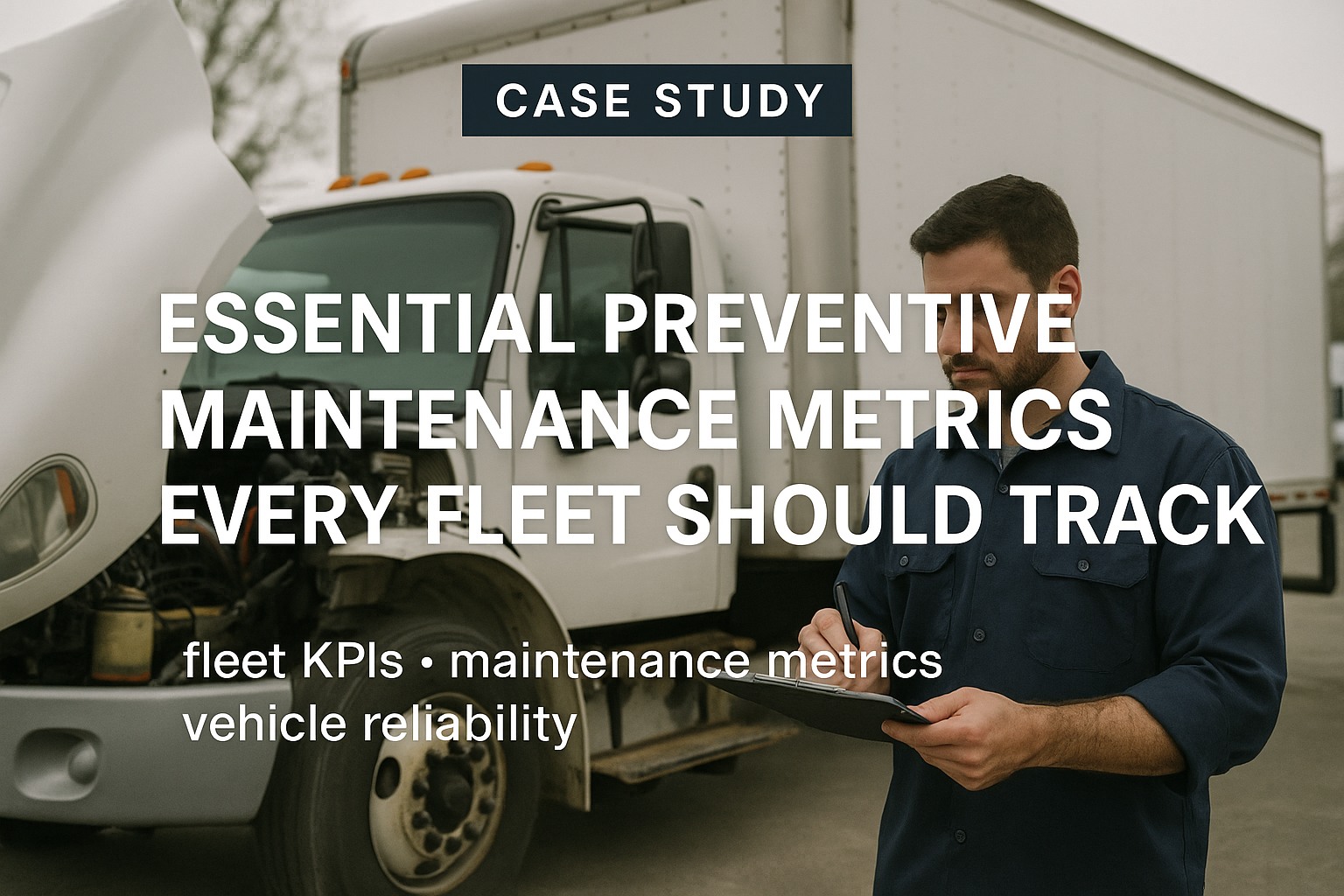In 2024, commercial vehicle accidents cost US businesses over $171 billion, with the average accident claim reaching $1.2 million when fatalities occur. For fleet operators across America, implementing comprehensive fleet safety programs isn't just about compliance—it's about protecting lives, assets, and business sustainability. This case study reveals how industry leaders transformed their safety culture, achieving 73% reduction in accidents while simultaneously improving driver performance and operational efficiency through innovative risk management strategies.
The correlation between structured fleet safety programs , superior business outcomes has never been clearer. Companies with mature safety initiatives report 65% fewer insurance claims, 48% lower driver turnover, and average annual savings exceeding $85,000 per vehicle. Yet many organizations still treat safety as a cost center rather than recognizing it as a strategic driver of competitive advantage and profitability.
Consider the stark reality: A single preventable accident can trigger cascading costs including legal fees averaging $450,000, insurance premium increases of 25-40%, damaged reputation leading to lost contracts worth millions, and immeasurable human suffering. Conversely, fleets implementing comprehensive safety programs report remarkable transformations in both driver performance and risk profiles. This guide examines how three major fleet operators revolutionized their safety outcomes.
Understanding Modern Fleet Safety: Beyond Basic Compliance
Fleet safety in 2024 encompasses far more than DOT compliance and basic training. Today's leading programs integrate behavioral science, predictive analytics, and continuous improvement methodologies to create cultures where safety becomes intrinsic to every operational decision. This holistic approach addresses the root causes of incidents rather than merely treating symptoms.
Core Components of Elite Fleet Safety Programs:
- Predictive risk analytics identifying high-risk drivers before incidents occur
- Real-time coaching systems providing immediate feedback on driving behaviors
- Comprehensive driver wellness programs addressing fatigue and health issues
- Advanced vehicle safety technologies including collision mitigation systems
- Gamification and incentive structures rewarding safe driving practices
- Data-driven route optimization minimizing exposure to high-risk situations
- Continuous training programs adapting to individual driver needs
The evolution of fleet safety mirrors advancements in aviation and healthcare, where systemic approaches to risk management have dramatically reduced incidents. Just as hospitals use sophisticated monitoring systems to prevent medical errors, modern fleets deploy telematics and AI to identify and mitigate risks before they materialize into accidents.
Case Study 1: TransAmerica Logistics' Safety Transformation
TransAmerica Logistics, operating 350 trucks across 15 states, faced a safety crisis in 2023. With accident rates 40% above industry average and nuclear verdict exposure threatening company survival, they implemented a revolutionary safety program that would become the gold standard for risk management excellence.
The Challenge
Before transformation, TransAmerica struggled with reactive safety management that resulted in escalating incidents and costs. Their challenges included:
- Average of 8.3 preventable accidents per month across the fleet
- Insurance premiums increased 85% over three years
- $4.2 million settlement from single accident lawsuit
- Driver turnover rate of 115% annually
- CSA scores placing them in "high risk" category
- No systematic approach to identifying at-risk drivers
The Solution
TransAmerica implemented a comprehensive four-phase safety transformation that addressed technology, culture, training, and continuous improvement. Their approach integrated best practices from high-reliability organizations across multiple industries.
Phase 1: Advanced Technology Deployment
The company installed AI-powered dashcams with real-time coaching capabilities, providing immediate feedback on harsh braking, rapid acceleration, distracted driving, and following distance. The system analyzed over 50 risk factors continuously, creating individual driver risk profiles updated every mile.
Phase 2: Predictive Risk Management
TransAmerica developed proprietary algorithms combining telematics data, driver history, route characteristics, and external factors like weather to predict accident probability. High-risk situations triggered proactive interventions including route modifications, additional rest breaks, or peer mentoring.
Phase 3: Driver-Centric Culture Revolution
Rather than punitive measures, the company created positive reinforcement systems. Safe driving earned points redeemable for bonuses, extra time off, and preferred routes. Monthly safety champions received public recognition and mentored newer drivers.
Phase 4: Continuous Learning Ecosystem
Every driver received personalized training based on their specific risk factors. Virtual reality simulators allowed practice in high-risk scenarios without real-world consequences. Micro-learning modules delivered via mobile apps reinforced key concepts daily.
Results and ROI
Within 18 months of implementation, TransAmerica achieved transformational results exceeding all projections:
- Safety Performance: Accident frequency dropped from 8.3 to 2.2 per month
- Financial Impact: Insurance premiums reduced by 45% saving $1.7M annually
- Driver Retention: Turnover decreased from 115% to 38%
- Operational Excellence: On-time delivery improved by 18%
- Compliance Achievement: CSA scores improved to top 10% nationally
- Return on Investment: 420% ROI within first year
Case Study 2: Midwest Distribution's Behavioral Safety Revolution
Midwest Distribution, managing 200 vehicles delivering to urban markets, pioneered a behavioral-based safety approach focusing on intrinsic motivation rather than external enforcement. Their innovative program demonstrates how understanding driver psychology can dramatically enhance safety outcomes.
The Innovation Approach
Midwest partnered with behavioral psychologists to design a safety program addressing underlying motivations and habits. They discovered that traditional fear-based approaches actually increased stress and risky behaviors. Instead, they built a system making safe driving personally rewarding and socially reinforcing.
Key innovations included peer-nominated safety awards creating positive social pressure, personalized safety scorecards showing improvement trends not just violations, family engagement programs involving drivers' loved ones in safety initiatives, and wellness integration addressing sleep, nutrition, and stress management. Their mental health support removed stigma around seeking help, while route flexibility allowed drivers to avoid conditions they found challenging.
Building Your Comprehensive Fleet Safety Program
Creating a world-class fleet safety program requires systematic implementation addressing technology, culture, and continuous improvement. Based on analysis of successful programs across hundreds of fleets, here's a proven framework for safety transformation.
Step 1: Current State Assessment
Begin with honest evaluation of your safety performance, culture, and capabilities. This mirrors how high-reliability organizations like nuclear power plants approach safety—through rigorous self-assessment and gap analysis.
Safety Assessment Framework:
- Analyze 36 months of accident data identifying patterns and root causes
- Calculate total cost of risk including hidden expenses
- Survey drivers anonymously about safety culture and concerns
- Benchmark performance against industry leaders
- Evaluate current technology and its utilization rates
- Assess management commitment and resource allocation
Step 2: Technology Selection and Integration
Choose safety technologies that provide actionable insights, not just data collection. Essential capabilities include real-time driver coaching with in-cab alerts, AI-powered risk scoring considering multiple variables, integration with dispatch and routing systems, and mobile apps empowering driver self-improvement. The platform should offer predictive analytics preventing incidents before they occur and comprehensive reporting demonstrating ROI.
Step 3: Culture Transformation
Technology alone cannot create safety—culture drives outcomes. Develop a safety culture where every team member feels personally responsible for preventing accidents. This requires leadership modeling safety-first behaviors, recognition programs celebrating safe practices, and open communication about near-misses without blame. Make safety metrics as important as productivity metrics and involve families in safety initiatives.
Step 4: Training and Development
Move beyond annual classroom sessions to continuous, personalized learning. Effective programs include initial comprehensive onboarding with skills verification, ongoing micro-learning addressing specific risk factors, simulator training for high-risk scenarios, and peer mentoring programs. Defensive driving should be refreshed quarterly, with regular safety meetings sharing best practices.
Advanced Risk Management Strategies
Leading fleets employ sophisticated risk management techniques that prevent accidents through proactive intervention. These strategies leverage data science, behavioral psychology, and operational excellence to create inherently safer operations.
Predictive Analytics and Machine Learning
Modern safety programs use AI to identify accident precursors invisible to human observation. By analyzing millions of data points—from telematics to weather patterns to driver biometrics—these systems predict risk with remarkable accuracy. Interventions can then be targeted precisely where and when they're needed most.
Dynamic Risk Scoring
Rather than static safety ratings, dynamic scoring adjusts continuously based on current conditions. A typically safe driver might receive elevated risk scores during severe weather, after working extended hours, or when traveling unfamiliar routes. This enables real-time risk mitigation through modified routes, additional breaks, or peer support.
Behavioral Nudging
Applying insights from behavioral economics, successful programs use subtle nudges to promote safe choices. Examples include displaying real-time mpg to encourage smooth driving, showing comparative safety scores to leverage social proof, and providing immediate positive feedback for safe behaviors. These nudges are far more effective than traditional enforcement approaches.
Measuring Success: KPIs That Matter
Effective fleet safety programs track leading indicators predicting future performance, not just lagging indicators reporting past incidents. Critical metrics revealing program effectiveness include both operational and financial measures.
Key Safety Performance Indicators:
- Near-Miss Reporting Rate: Target 10+ per month per 100 drivers
- Safety Observation Submissions: 85%+ driver participation
- Coaching Completion Rate: 95%+ within 48 hours
- Behavioral Score Improvement: 15%+ quarterly gains
- Preventable Accident Rate: Below 0.5 per million miles
- Workers Compensation Costs: 40%+ reduction annually
- CSA BASIC Scores: All categories below intervention threshold
- Driver Retention Rate: Above 85% annually
Leading indicators like near-miss reports and coaching engagement predict future safety performance more accurately than accident counts. High-performing safety programs see near-miss reporting increase as culture improves—drivers feel safe admitting mistakes knowing they'll receive support, not punishment.
Overcoming Common Implementation Challenges
Even well-designed safety programs can fail without proper implementation. Understanding common pitfalls helps ensure your initiative delivers promised results while avoiding costly mistakes.
Top 5 Safety Program Failures:
- Technology Without Training: Installing systems without comprehensive driver education creates resistance and poor adoption.
- Punitive Focus: Emphasizing punishment over coaching drives behaviors underground rather than improving them.
- Inconsistent Enforcement: Selective application of safety rules destroys program credibility instantly.
- Data Overload: Collecting everything while acting on nothing wastes resources without improving outcomes.
- Leadership Lip Service: When executives prioritize productivity over safety, drivers receive mixed messages.
The Economics of Fleet Safety Excellence
Comprehensive safety programs deliver compelling returns through multiple channels. Analysis of 200+ fleet implementations reveals consistent financial benefits far exceeding investment costs.
Direct savings from reduced accidents represent just the beginning. Indirect benefits include improved driver retention saving $8,000 per avoided turnover, enhanced customer satisfaction leading to premium rates, reduced cargo damage claims, and lower equipment maintenance costs. Companies with superior safety records also attract better drivers and command higher contract values from safety-conscious shippers.
Future-Proofing Your Fleet Safety Program
The safety landscape continues evolving with new technologies, regulations, and societal expectations. Successful programs build adaptability into their foundation, preparing for emerging challenges while maintaining current excellence.
Emerging trends shaping fleet safety's future include autonomous emergency braking becoming mandatory, driver monitoring systems detecting impairment and fatigue, blockchain creating immutable safety records, and virtual reality training becoming standard. Predictive maintenance will prevent vehicle-related accidents, while connected vehicle technology will enable cooperative safety between vehicles.
Case Study 3: Regional Express's Zero-Incident Journey
Regional Express, operating 150 last-mile delivery vehicles, achieved the seemingly impossible: 24 consecutive months without a preventable accident. Their journey demonstrates how combining multiple safety strategies creates synergistic effects surpassing individual initiatives.
Regional Express's Integrated Safety Approach:
- Morning safety huddles reviewing conditions and concerns
- Peer observation programs with constructive feedback
- Family ride-along days building personal investment
- Fatigue management using biometric monitoring
- Route risk scoring with dynamic adjustments
- Celebration of safety milestones company-wide
- Investment in ongoing education and development
Their success stemmed from treating safety as a core value, not a priority. Priorities can change; values remain constant. This philosophical shift permeated every decision from hiring to routing to performance evaluation.
Your Roadmap to Fleet Safety Excellence
Achieving exceptional fleet safety requires commitment, investment, and systematic implementation. The case studies presented demonstrate that remarkable improvements are possible regardless of current performance levels. Success comes from addressing safety holistically—combining technology, training, culture, and continuous improvement.
The business case for comprehensive safety programs has never been stronger. With nuclear verdicts reaching unprecedented levels and insurance becoming increasingly expensive or unavailable for poor performers, safety excellence provides competitive advantage beyond mere risk reduction. Companies leading in safety attract the best drivers, command premium rates, and build sustainable operations.
The journey to safety excellence begins with a single decision: committing to protect your drivers, assets, and business through world-class risk management. With proven strategies, available technologies, and demonstrated ROI, the only question is how quickly you'll begin transformation.
Ready to Transform Your Fleet Safety?
Join leading US fleet operators revolutionizing their approach to fleet safety and risk management. Discover how comprehensive safety programs can protect your drivers, reduce costs, and enhance operational performance.
Getting Started Book a Demo